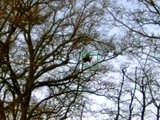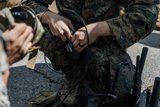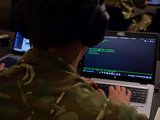Lockheed Martin awarded additional SEWIP Block 2 work
Lockheed Martin will perform work to upgrade the US Navy fleets’ electronic warfare defences under a $147 million contract announced on 22 September.
The low-rate initial production contract for Block 2 of the Navy's Surface Electronic Warfare Improvement Program (SEWIP) will see Lockheed Martin provide 14 systems to upgrade the AN/SLQ-32(V)2 system on all US aircraft carriers, cruisers, destroyers and other warships.
The upgrades will bring new key capabilities to determine if the electronic sensors of adversaries are tracking the ship, and provide protection against evolving threats, such as anti-ship missiles.
Joe Ottaviano, SEWIP program director, Lockheed Martin Mission Systems and Training, said: ‘This subsequent SEWIP Block 2 contract continues our support of the US Navy with capabilities that will rapidly introduce new technology to the sailors.
‘Our fleets are facing a rapidly changing threat environment in theatres across the globe. This contract allows us to continue providing much needed technological advances that will help outpace our adversaries and protect our warfighters.’
Block 2 is the latest in an evolutionary succession of block improvements to the US Navy’s shipboard electronic warfare system, which will incrementally add new defensive technologies and functional capabilities.
The company was awarded ten systems as part of low-rate initial production in 2013, which are currently being delivered to the fleet. In July, the US Navy installed Lockheed Martin's SEWIP Block 2 system on USS Bainbridge (DDG-96) for operational testing.
More from Digital Battlespace
-
![EID to unveil new vehicle communication system at DSEI]()
EID to unveil new vehicle communication system at DSEI
The Portuguese company’s naval communications system is in service across more than a dozen countries. It has turned to its home nation for support in developing a new vehicle based C2 system.
-
![Chess Dynamics successfully demonstrates Vision4ce AI-driven tracker]()
Chess Dynamics successfully demonstrates Vision4ce AI-driven tracker
The Vision4ce Deep Embedded Feature Tracking (DEFT) technology software is designed to process video and images by blending traditional computer vision with artificial intelligence (AI) algorithms to present actionable information from complex environments.
-
![Wave Relay devices cleared for security use on commercial systems in industry trend]()
Wave Relay devices cleared for security use on commercial systems in industry trend
Persistent Systems has been cleared by National Security Agency (NSA) to transmit sensitive data on commercial networks. The devices are added to the NSA’s Commercial Solutions for Classified (CSfC) component list which also includes other companies’ products providing the same security.
-
![UK teases cyber spending boost in Strategic Defence Review ahead of “imminent” release]()
UK teases cyber spending boost in Strategic Defence Review ahead of “imminent” release
The release of the UK’s Strategic Defence Review (SDR) has been long promised as mid-year. It is possible it could be as early as 2 June although the UK Ministry of Defence (MoD) continues to play its cards close to its chest.
-
![Intelsat emphasises SATCOM resilience for SOF in contested domains (video)]()
Intelsat emphasises SATCOM resilience for SOF in contested domains (video)
Intelsat outlines how its multi-orbit SATCOM architecture is enhancing connectivity and resilience for special operations forces operating in degraded and contested environments.
-
![US Space Force’s next-generation missile warning system moves forward with $500 million in new contracts]()
US Space Force’s next-generation missile warning system moves forward with $500 million in new contracts
Next-Generation Overhead Persistent Infrared (Next-Gen OPIR) satellites are intended to provide early warning of missile launches from any location worldwide and new ground stations will result in expanded coverage of critical missile warning.
























